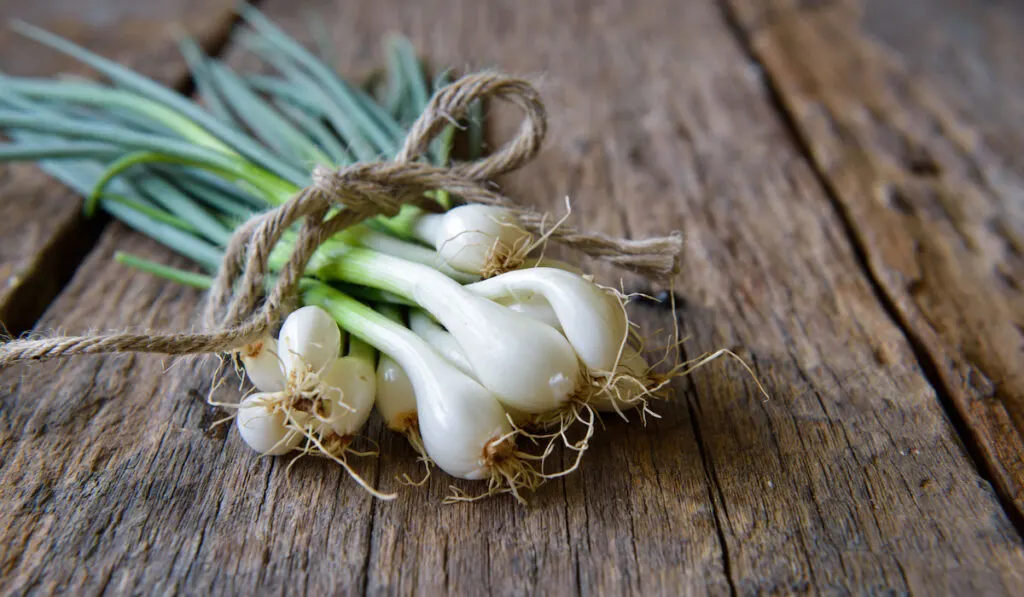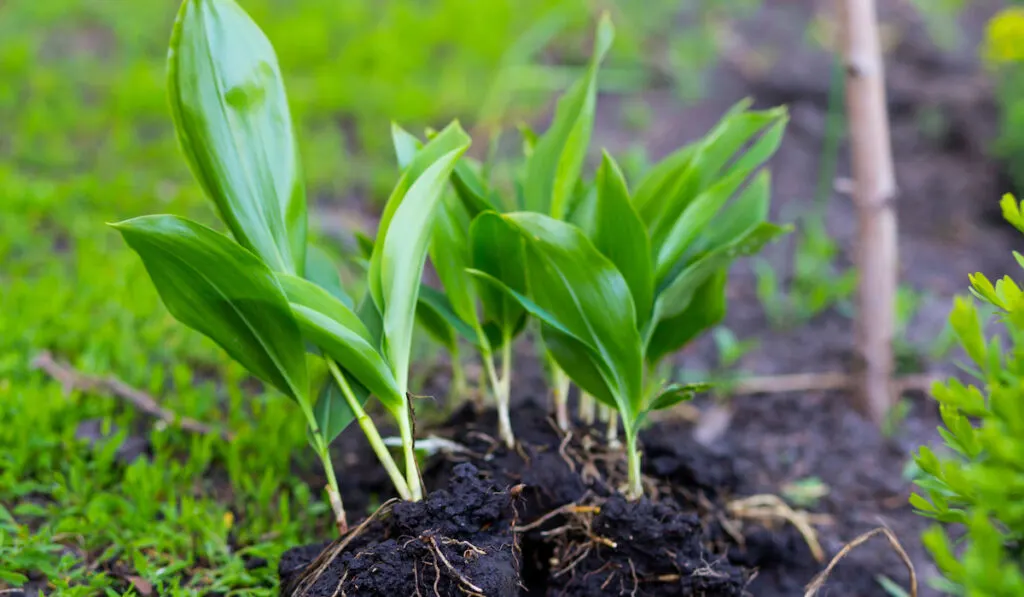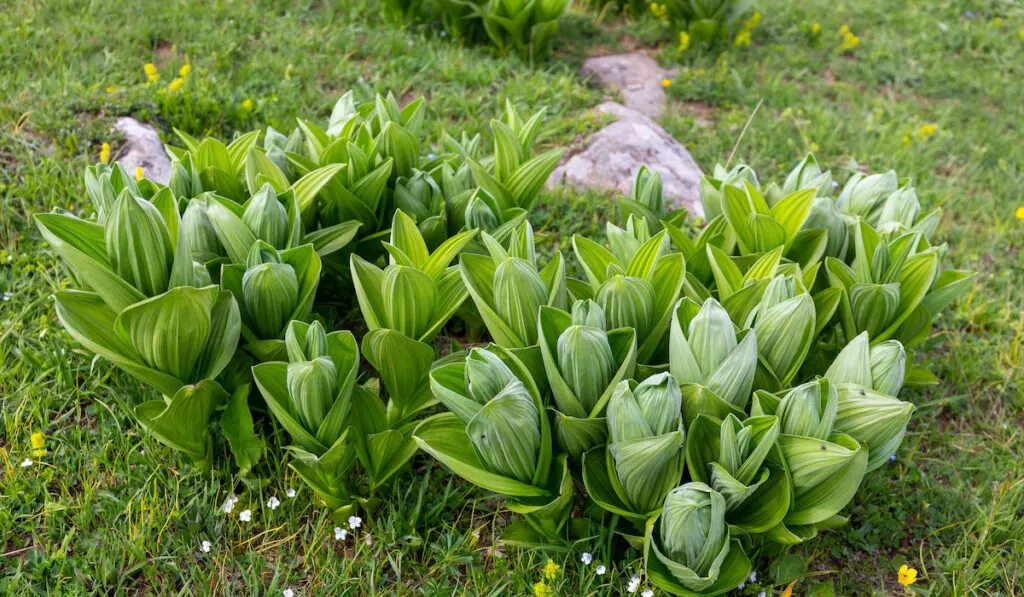As a kid, I lived in a suburban neighborhood that backed into the woods. We’d spend all our free time outside exploring in the woods or playing with neighbors, and at the edge of the woods, there were these bright green plants.
These plants stood out prominently from the regular grass, with almost lime green, tubular stems that were waxy and shiny. Being tall and skinny, they reached up much higher than the grass as well. And a final distinguishing factor: they smelled awful. So we simply had to dig them up.
We’d pull them out by the lowest part of the stem to avoid only breaking off the leaves. As we yanked them out and they were torn from the earth, the ends revealed themselves to be tiny onions!
These small white spheres, which were about the size of a dime, were a delight to us kids. Wild onions! That’s food! We’d take them back to our fort in the woods, and chop them up or crush them or store them in bushels, pretending to make food in our kitchen of log countertops.

It was great fun, and although the scent in the air – and on us – was pungent, it was worth it.
However, as I’m looking back on our play-pretend onion cooking in our makeshift kitchen, it makes me wonder: are wild onions really edible, or were we fortunate enough not to be foolish and actually try to eat them? Are all wild onions so small, and if so, how do the ones we see in grocery stores get so big?
Acting on my pondering, I’ve researched and come up with some good answers to those questions and to yours: what are the types of wild onions, and how do you identify them? Read on to find out!
Table of Contents
The Types of Onions That Grow in the Wild: A Brief Overview
Wild onions, as the name says, are the only family of onions that aren’t grown and raised by human means. These onions are rampant and can be found anywhere, from the woods to the grasslands to your own backyard! They are also known by another name: wild leeks.
They are particularly hard to uproot and keep out of gardens once they are established.
Some of these onions are viewed as a delicacy because of their uniqueness to other types of onions. Most wild onions are small, with tiny spherical bulbs and ribbed, hollow stems.
From the bulb to the stems to the flowers, all these parts of the onion are edible! Simply peel off the outer layer of the onion’s skin and wash it thoroughly.
However, the bulbs are so small and not filling as compared to other onions. You’d have to chop a ton of wild onions to get the same amount as one standard onion!
So the stems are what most people eat, slicing them up into little hollow rings. Ever had Hawaiian haystacks? Then you’ve eaten wild onions! When they are used in culinary creations, wild onions are typically referred to as green onions.
Allium canadense
All onions have the genus name Allium. The first type of wild onion is the stereotypical wild onion, the Allium canadense, also called wild garlic or meadow garlic.
Wild garlic has a mostly white lower stalk with multiple stems branching off toward the top which become progressively darker green to their tips. When uprooted, the bulb is round and white.
In the spring, these onions will be topped with pinkish-white flowers. This wild onion is found all over the United States. All parts are edible, and all are a mild, pleasant flavor, easily substituting garlic in a recipe.

Allium tricoccum
Next up, we have the Allium tricoccum, also known as the spring onion, ramson, or ramps.
The spring onion is the first onion of the season to grow. It thrives in deciduous forest environments that are nutrient-rich and moist. They are found across Canada and America, and in mountainous regions as well.
These onions have wide, flat green leaves on the top. Farther down to the stem, you’ll see the color change from green to red (the stem is red)! Pulling the onion out of the ground, you’ll find it’s changed color again, finishing off with a white bulb!
When reproducing, these onions will lose their leaves. In the leaves’ place, a small bunch of white flowers will grow, producing a single seed to pass on and keep the onion tradition alive, so to speak.
When cooking with it, the spring onion has a very pungent odor and taste, and only a little needs to be used to be effective.
Allium cepa
Finally, we have Allium cepa, which goes by the name of “shallot” as well. These wild onions are more exotic, native to Asian countries rather than Western ones. They are distinguishable by their colored bulbs, unlike Western wild onions, which are always strictly white-bulbed.
Shallots are known for their white stems with thick green stalks, branching out into two stalks and reaching an impressive height. The bulbs can be a variety of colors, ranging from white tinged with brown, red, or purple.
They are also distinguishable from American wild onions by their size! Shallots can grow to be palm-sized, the size of grocery store onions.
How Do You Identify Wild Onions When Foraging?
Wild onions have an even stronger odor than cultivated ones. They have a pungent odor of garlic and, well, onion. Get a good whiff of onion before you leave to forage, and hold that smell in your mind, like a bloodhound.

Scent alone can help distinguish an onion plant from most others in the woods. However, other commonalities can distinguish them:
- Onions all grow from bulbs and have tall, waxy stems with leaves at the end (either skinny stalk-like leaves or large, flat leaves).
- All get white near the bulb.
- When reproducing, all onions grow flowers near the tips of the leaves, and the flowers have a papery texture.
Wild onions are best to forage for when the stalks begin to die off. When they are browning and wilting, it’s a sign that the bulbs are at their ripest and ready to harvest!
Wild onions are a popular food, and, as they have been distinguished as a gourmet ingredient in many high-class dishes, are valuable and high priced.
Or, if you’re foraging for your own kitchen, onions will add a decadent air to the food you prepare!
A PSA to Our Readers: When Out in Nature, Please Don’t Just Start Eating Random Plants!
Foraging in nature is a great way to keep the natural world as a part of yours. However, there are highly harmful plant species out there! You must be careful not to expose yourself or your loved ones to them in the riskiest way, through ingestion.
Do not eat foods found in nature until you have positively identified the plant and its parts as safe to eat, whether through online research or from the validation of an expert.
If you’d like to go on a professionally led foraging expedition, there are arranged hikes with local experts in many areas, and very possibly near you! These hikes are a great way to safely get started finding wild onions and to get the basic knowledge you can use to distinguish between safe and potentially harmful plants.
The Poisonous Plant in Disguise: A Cautionary Tale

Speaking of highly harmful plants, there are some plants that appear similar to wild onions. These look-alikes may confuse you and can poison you or cause serious damage when ingested. (Hence, as a beginner, start your foraging career with an expert-led tour!) We’ll give you a few of these dangerous ones to look out for.
There are two dangerous plants that look similar to the spring onion: Convallaria majalis, or lily-of-the-valley, and Veratrum.
Lily-of-the-valley has green flower stalks with white bell-shaped flowers along the upper end of green to reddish stalks. They also grow from bulbs, but these bulbs are larger than wild onion bulbs and may be white or slightly pink in color (see picture above).
However, one main difference you should note is its growth habit. The leaves of lily-of-the-valley are broad and oval-shaped and surround the flower stalk. Unlike wild onions, lily-of-the-valley spreads widely into a bright green leafy groundcover 6-8 inches tall. Wild onions are significantly taller and grow in clumps.
Lily-of-the-valley is mildly poisonous and only dangerous in large quantities. You can’t avoid the poison, though: the roots, stems, and flowers are all poisonous to humans and pets.

Veratrum looks less like spring onions, but is still worth mentioning as it has a high poison content. Veratrum has large, flat leaves, but no bulbs, and the entire plant is poisonous!
Other plants that look similar to the typical wild onion are death camas, false garlic, and Star of Bethlehem. All have tall, green stalks and white flowers on the ends, and are highly poisonous when consumed.
Just stick to the smell and beware! If in doubt, don’t stick it in your mouth!
